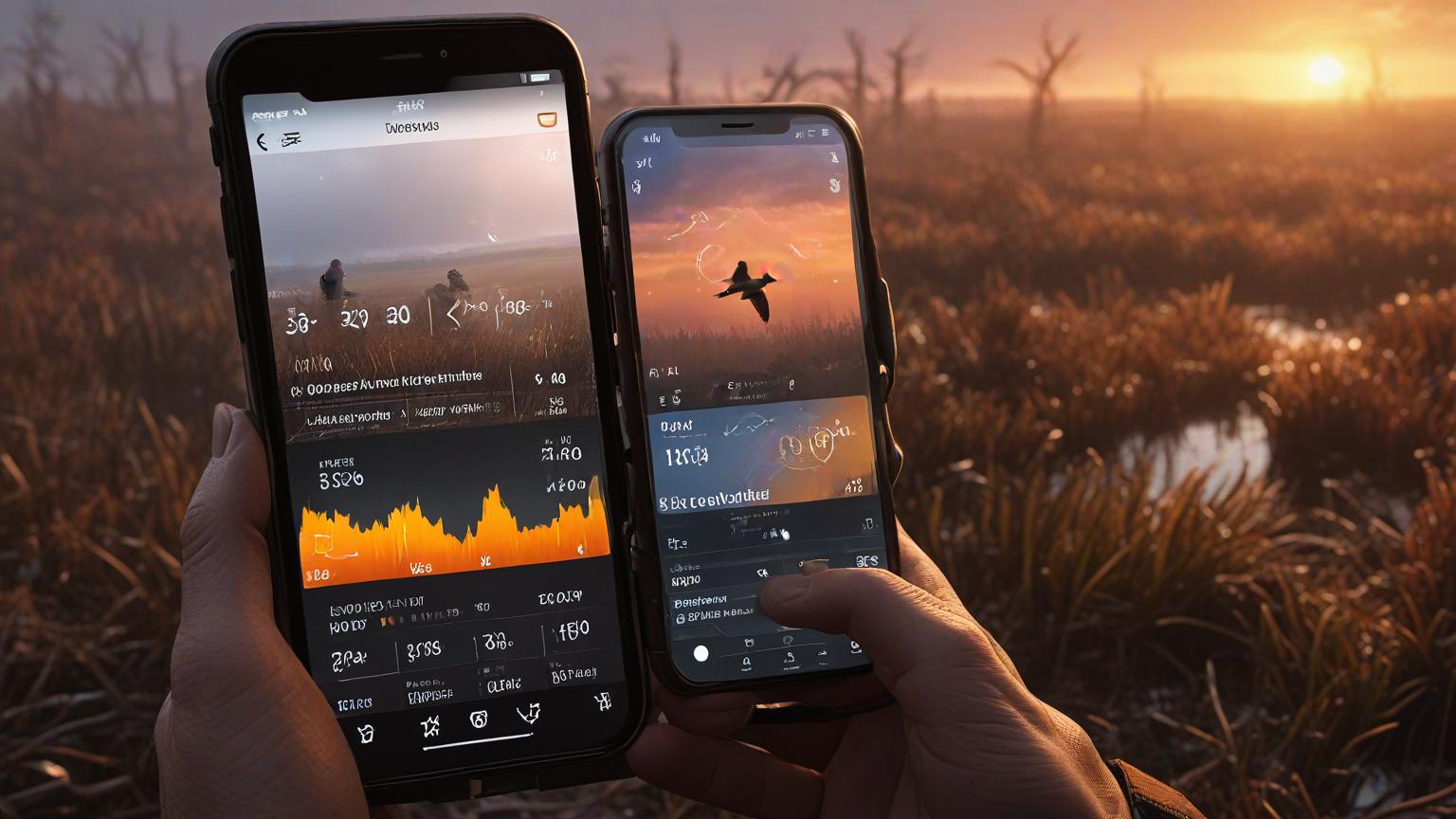Weather plays a critical role in duck hunting success, especially in Arkansas, where wetlands, flooded rice fields, and timber areas provide diverse hunting environments. The right weather conditions can dictate duck behavior and movement patterns, making it essential for hunters to use weather apps to stay informed and plan their hunts effectively. Here’s how to leverage weather apps to optimize your duck hunting strategy in Arkansas.
1. Monitor Wind Conditions
Wind direction and speed significantly affect duck movement. Ducks are more likely to fly when there’s a consistent wind, and they often fly into the wind for easier navigation. Understanding wind patterns can help you anticipate where ducks will land and how to position your decoys.
- Use Wind Forecasts: Weather apps provide real-time wind speed and direction forecasts. Look for days with winds between 5-15 mph, which tend to be ideal for duck activity.
- Wind Direction for Setup: Pay attention to wind direction. Set up your decoys so the wind is coming from behind you, allowing ducks to approach head-on or at an angle. This reduces the chance of them spotting you.
2. Track Temperature and Barometric Pressure
Temperature and barometric pressure have a direct impact on duck movement. Cold fronts push ducks southward, and significant changes in barometric pressure often trigger increased feeding activity.
- Cold Fronts and Migration: Weather apps will track the arrival of cold fronts, which signal migratory ducks to move through the area. Cold fronts typically bring increased waterfowl activity, so plan your hunts around these changes for the best chance at success.
- Barometric Pressure: A drop in barometric pressure, especially ahead of a storm, often increases duck activity. Use your weather app to monitor pressure patterns and prepare to hunt when it’s low or dropping, signaling an active hunting day.
3. Check Precipitation and Rain Patterns
Rain and precipitation can be a game-changer for duck hunting in Arkansas. Ducks are more likely to be active and feed during light rain or drizzle, and they tend to stay in the area longer in wet conditions.
- Rain Forecasting: Use weather apps to check precipitation predictions. Light to moderate rain often brings ducks into open waters to forage. Keep an eye on the timing of rainstorms and be ready to head out just before or as rain begins.
- Avoid Heavy Storms: While light rain is ideal, avoid hunting during severe storms or heavy rain. Not only will these conditions reduce visibility, but they can also make navigation dangerous, especially in Arkansas’ swampy terrain.
4. Utilize Sunrise and Sunset Times
Knowing the exact times for sunrise and sunset is essential for timing your hunts. Ducks are most active during the early morning and late afternoon hours, typically just before and after the sun rises or sets.
- Early Morning Hunts: Use your weather app to check the time of sunrise and plan to arrive well before dawn. Ducks are often the most active as they fly out of their roosts to feed at daybreak.
- Evening Flight: Many hunters also target the evening flight, which typically begins about an hour before sunset. Look for sunset times to gauge when ducks might return to their roosts.
5. Stay Informed with Hourly and 10-Day Forecasts
Weather can change rapidly, especially in Arkansas where conditions can shift from sunny to stormy in a matter of hours. Keeping an eye on both short-term and long-term weather forecasts helps you adjust your strategy as needed.
- Hourly Forecasts: Hourly weather forecasts give you the most precise information about when conditions will change, such as wind shifts, rain, or changes in temperature. These predictions are useful for adjusting your hunting times and decoy setups.
- 10-Day Forecasts for Planning: The 10-day forecast helps you plan ahead for hunts. If you see a cold front approaching or stable weather conditions, you can schedule hunts on the best days.
6. Use Weather Apps with Radar Features
Radar features in weather apps are excellent for tracking rain, snow, or fog patterns that can affect visibility and duck activity. These radar maps allow you to monitor incoming storms or changes in weather, enabling you to plan accordingly.
- Track Storms: If you’re dealing with an incoming storm, radar maps let you pinpoint exactly when it will hit and how it will impact your hunt. Plan your hunt before the storm arrives for the best conditions.
- Assess Visibility: Heavy fog can reduce visibility and make shooting difficult. Use radar to assess the fog forecast, and if necessary, adjust your start times.
Conclusion
Weather apps are invaluable tools for optimizing your duck hunting strategy in Arkansas. By monitoring wind conditions, temperature, precipitation, and barometric pressure, you can predict duck behavior and make informed decisions about when and where to hunt. Staying updated with hourly and long-term forecasts, and utilizing radar maps to track storm activity, ensures you’ll be ready to capitalize on the best hunting conditions. With the right weather information, your duck hunting experience in Arkansas will be more successful and enjoyable.

